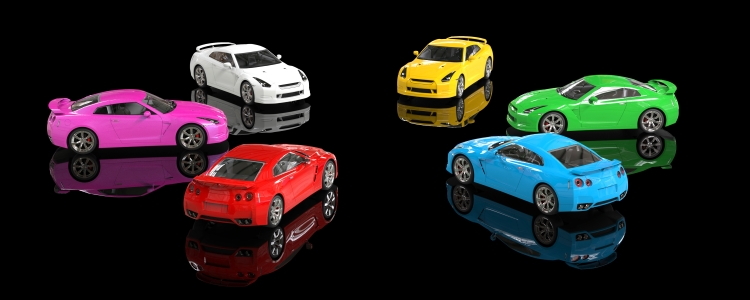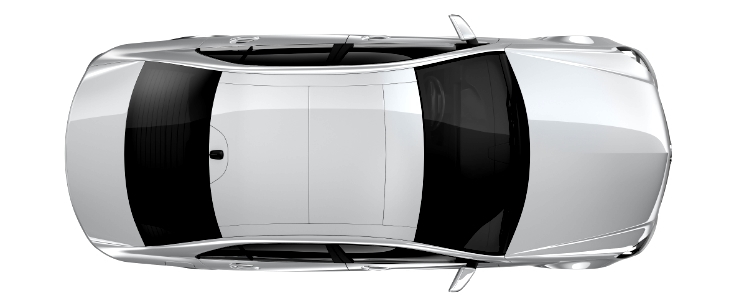The conventional wisdom has always been to avoid buying brightly colored cars. This is because cars with "out there" colors are said to have a more limited resale market. However, a recent study and Honda are both saying that brightly colored cars may have more advantages attached to them than you'd think.
The Conventional Wisdom on Brightly Colored Cars

Year in and year out, white, black, silver and gray are always among the most common vehicle colors. The conventional wisdom is that neutral colors stand a better chance of returning more at resale than bright colors. Meanwhile, you would think that fewer people would be in the market for a used brightly colored car.
However, a recent study from automotive data and research company iSeeCars.com says otherwise. They performed an analysis of 1.6 million vehicles. The goal was to see if and how color matters when it comes to a vehicle's retained value. What they found was quite surprising.
First off, of all car colors, they found that orange and yellow vehicles depreciated the least in the first three years of ownership. The study also found that off-beat colored cars still do well in the used car market. Their logic is that more unusual colors are not as available, which creates some demand.
Meanwhile, popular car colors like black, white and gray depreciated at a rate that was closer to the average. They believe this is because buyers shopping for cars in these colors have many more to choose from, so sellers don’t have as much pricing power.
Honda is also on board with bolder car colors. It recently highlighted two advantages of brightly colored cars that aren't discussed very often.
Honda and the Benefits of Brightly Colored Cars
Honda had a few good points to raise about brightly colored cars, too. They did so in promoting the latest color offerings on the Honda Fit, which is known as the "Jazz" in Europe, Africa, the Middle East, and many parts of Asia. The latest colors are Mystic Yellow Pearl and Sunset Orange, which are available in most of those markets.
Think those colors are too out there for you? Honda says to consider the fact that brightly colored cars are statistically less likely to be involved in an accident. Also, they cite that strong hues can give moods a lift.
A recent study from Monash University in Melbourne, Australia looked into the relationship between accident rates and car colors. They found that orange cars were statistically the least likely to be involved in an accident. Other bold colors that had a lower crash risk included mauve (pale purple), fawn (yellowish tan), yellow, cream and gold.
Meanwhile, the study showed that black and grey vehicles demonstrated a higher accident risk. The experts behind the study attributed this to the fact that cars of these colors were less visible, especially in poor weather or limited light.
Honda, furthermore, cited several psychological findings that show that bold colors can help lift moods. Psychologists have long drawn links between color and personality. It's said that orange is a color that brings to mind feelings of warmth and excitement, while yellow is cheery and warm as well.
With that in mind, Honda believes a bold color choice can help improve the moods of car owners. The winter months mean shorter days and longer and darker nights, but they believe an orange or yellow Fit could provide some good vibes to help owners' moods.
The Bottom Line
It appears that the conventional wisdom behind brightly colored cars may be all wrong. iSeeCars is reporting that orange and yellow cars depreciate less, while Honda cites studies that show cars with bold colors are statistically less likely to be involved in an accident.
If you are in the market for a brightly colored car, but are worried that your credit will keep you from getting approved for financing, Auto Credit Express can help. We match car buyers with credit issues to dealerships in their area that are special finance experts.
We can help you next if you simply complete our free and easy online application.
















